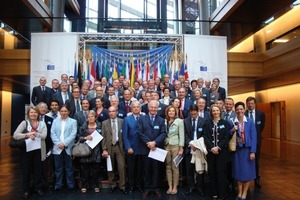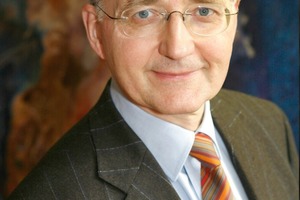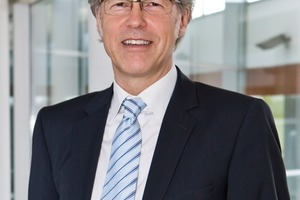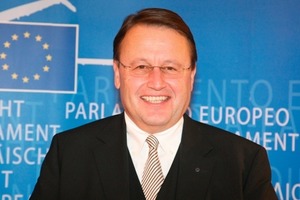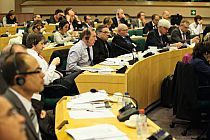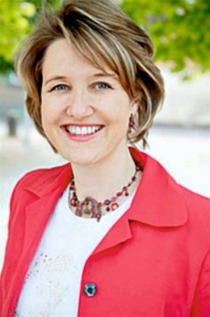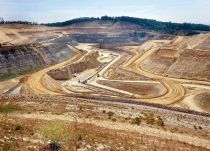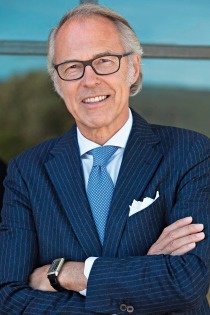50 years support for the interests of the European Gypsum Industry
Eurogypsum Congress 2010, Strasbourg/France (16.–17.06.2010)On 16.06.2010, Eurogypsum celebrated its 50 years anniversary. To mark this event, Eurogypsum wanted a city representative of the European spirit (Fig. 1). Historically Strasbourg has been a bridge of unity between France and Germany. It is also the city of Robert Schuman, one of the founders of the European organization. Finally, Strasbourg is the place for the development of sustainable relations with the European MEPs (Members of the European Parliament). The gala dinner on 16.06.2010 gave the European Gypsum Industry the opportunity to dialogue with more than 15 MEPs from Germany, Austria, Spain, The Netherlands and France.
The CEOs of Saint Gobain Gyproc, Lafarge Gypsum and Knauf, i.e., Mr. Pierre-André de Chalendar, and Mr. Claude Imauven, from Saint Gobain, Building Materials Sector, Mr. Claude-Alain Tardy, from Saint Gobain Gyproc, Mr. Grundke, from Knauf, Mr. Christian Herrault, from Lafarge Plâtres and Mr. Bernard Lekien, from Lafarge Plâtres, President of Eurogypsum for the years 2010–2012, attended this event. With the MEPs they were able to discuss sustainable construction and growth, innovation, the core business of the gypsum industry, and job creation in the field of construction.
The gala dinner was held at the famous Palais Rohan, classified as a World Heritage site by UNESCO in 1988 and one of the most important buildings in Strasbourg located in the historic city centre next to the cathedral.
At the end of the gala dinner, Jean-Pierre Clavel (Fig. 2), current president of Eurogypsum said that during the years 2008–2010, Eurogypsum members achieved significant results by working well and quickly. These achievements and commitments will be a good foundation for developments of future policy. The association has launched three important projects: the first one is the calcium sulphate consortium; the second one the promotion of skimming based on European guidelines on drywall jointing and finishing; and the third one the recycling of non-load bearing elements of a building. Eurogypsum also published a brochure on best practices in biodiversity stewardship.
Jean-Pierre Clavel highlighted the fact that “the effective influence of Eurogypsum and its commitment to the implementation of EU policies was well regarded and that the gypsum industry had acquired a higher visibility”. However, he continued “there is still a lot to do, mainly in the environmental field with many initiatives to come”. Jean-Pierre Clavel added “I am confident that we have developed a good team with a clear strategy. It will help my successor Bernard Lekien (Fig. 3) to continue promoting the European Gypsum Industry in the field of sustainable construction throughout the life cycle of gypsum products”. Bernard Lekien stated that sustainable construction is the key in the Gypsum Industry and that its promotion will be the core objective of his presidency. According to the Conseil International du bâtiment, sustainable construction could be defined as: “the creation and operation of a healthy environment based on resource efficiency and ecological principles”. As we know, the basic resources needed for construction are raw materials, energy, water, land, and ecological systems. These sustainable construction principles include: reduce, reuse, and recycle resources; protect nature in all activities; eliminate toxic substances from construction; apply life cycle economics in decision making; and thus create a quality built environment taking into consideration a few quality aspects: aesthetics, durability, maintainability.
The work undertaken by Eurogypsum also concerns demolition waste management, in order to reach the 70 % target for Recycling, Re-use and Material recovery of Construction and Demolition Waste. In other words, the construction product manufacturers wish to push for deconstruction on the basis of achievable targets.
Another task is to promote interior insulation which has many advantages, especially for renovation. Remember that interior insulation allows the retainment of attractive façades, facilitates better thermal properties and more comfort, for example if there is no consensus between owners to insulate from outside.
Paul Rübig (Fig. 4), Austrian MEP from the Christian Democrat political party, who sponsored the Eurogypsum event in Strasbourg, stated “that in the 50 years since its founding, Eurogypsum has made a great contribution to technological development in construction. The companies in the Gypsum Industry will continue along this path working together through their federation. I am convinced of their commitment“. 12 MEPs attended the evening dinner: Paul Rübig, Gaston Franco, Jean-Paul Gauzes, Françoise Grossetête, Lambert van Nistelroij, Anja Weisgerber, Martin Kastler, Richard Seeber, Emma Mc Clarkin, Julie Girling, Sergio Cofferati, Vittorio Prodi were present at the dinner. This presence encouraged our members to establish a stable and effective relationship with the MEPs in the future.
On 17.06.2010, MEP Paul Rübig welcomed the Gypsum Industry to the European Parliament premises. Eurogypsum members visited the hemicycle of the plenary hall and listened to Nick Blow from Strategis Communication who gave a lecture on how the European Parliament and the European institutions operate and influence the decision-making process in Europe. This was followed by a speech by Paul Rübig on the priorities of the European Parliament for the next 4 years.

